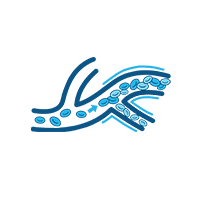Sciatica
Sciatica is characterized by pain that follows the route of the sciatic nerve, originating in the lower back, passing through the hips and buttocks, and extending down each leg. Generally, this pain is unilateral, affecting only one side. The primary triggers for sciatica include compression or irritation of the sciatic nerve or its spinal root branches (1). Common culprits include herniated discs, spinal bone spurs, or spinal stenosis, which exert pressure on the nerve (1). This pressure leads to inflammation, resulting in pain and potential numbness in the impacted leg.
The primary cause of disc herniation is age-related wear and tear (disc degeneration), where the nucleus pulposus (the soft center of the spinal disc) loses moisture and becomes brittle (2). This can result in the disc herniating and pressing on the sciatic nerve (2). Furthermore, this nucleus pulposus releases inflammatory proteins (cytokines) that lead to inflammation (3,4) in sciatic nerve root and sciatica. Research has also indicated that the severity of disc herniation is linked to alterations in the blood levels of inflammation-causing cytokines. (7). Simply stated, pain from a herniated disc (and subsequently, sciatica) arises not only from the physical pressure it exerts but also from inflammation-causing substances it releases.
Extivita Therapies for Sciata:
Extivita Therapies for Sciata
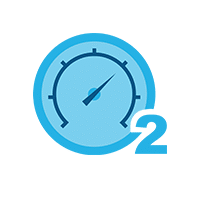
Hyperbaric Oxygen Therapy

Nutritional IV Therapy
Hyperbaric Oxygen Therapy for Sciata:
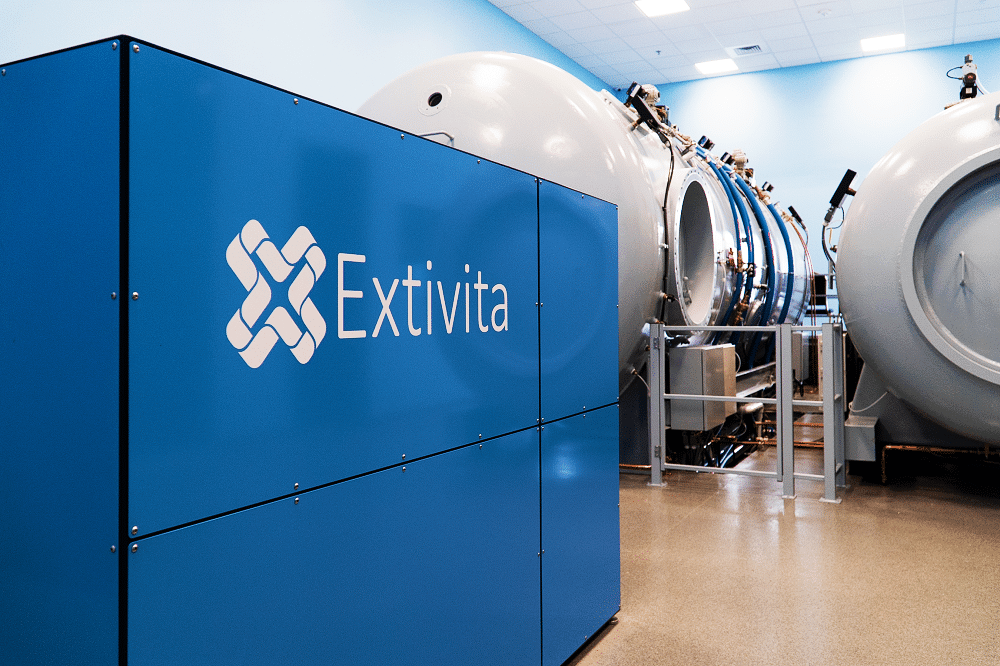
Hyperbaric oxygen therapy (HBOT) offers potential benefits for those who suffer from sciatica. It can reduce inflammation (5,6), often a primary cause of sciatica, and alleviate nerve pressure related to disc herniation. HBOT enhances oxygen delivery to tissues, promoting healing in areas with limited blood flow. It also has neuroprotective effects, safeguarding nerve cells from damage, reduces tissue swelling (edema), and stimulates collagen production essential for tissue repair. These combined effects could aid in the recovery and relief from sciatica symptoms.
HBOT can help by:
- Reducing inflammation and swelling by decreasing cytokine expression.
- Stem cell mobilization- stem cells can help repair the disc, rebuild healthy tissue.
Resources
- Koes, B W et al. “Diagnosis and treatment of sciatica.” BMJ (Clinical research ed.) vol. 334,7607 (2007): 1313-7. doi:10.1136/bmj.39223.428495.BE
- Dydyk AM, Ngnitewe Massa R, Mesfin FB. Disc Herniation. [Updated 2023 Jan 16]. In: StatPearls [Internet]. Treasure Island (FL): StatPearls Publishing; 2023 Jan-. Available from: https://www.ncbi.nlm.nih.gov/books/NBK441822/
- Takahashi, H et al. “Inflammatory cytokines in the herniated disc of the lumbar spine.” Spine vol. 21,2 (1996): 218-24. doi:10.1097/00007632-199601150-00011
- Phillips, Kate L E et al. “The cytokine and chemokine expression profile of nucleus pulposus cells: implications for degeneration and regeneration of the intervertebral disc.” Arthritis research & therapy vol. 15,6 (2013): R213. doi:10.1186/ar4408
- Niu, Chi-Chien et al. “Beneficial effects of hyperbaric oxygen on human degenerated intervertebral disk cells via suppression of IL-1β and p38 MAPK signal.” Journal of orthopaedic research : official publication of the Orthopaedic Research Society vol. 29,1 (2011): 14-9. doi:10.1002/jor.21195
- Wang, I-Chun et al. “Effect of hyperbaric oxygenation on intervertebral disc degeneration: an in vitro study with human lumbar nucleus pulposus.” Spine vol. 36,23 (2011): 1925-31. doi:10.1097/BRS.0b013e3181feebde
- Jacobsen HE, Khan AN, Levine ME, Filippi CG, Chahine NO. Severity of intervertebral disc herniation regulates cytokine and chemokine levels in patients with chronic radicular back pain. Osteoarthritis and Cartilage. 2020 Oct;28(10):1341-1350.
IV Therapy for Sciata:
Nutritional IV therapy, including the Meyer’s cocktail, is becoming a favored option for patients dealing with sciatic pain, thanks to the efficacy of several nutrients in providing pain relief. Vitamin C, known for its anti-inflammatory and antioxidant properties, not only helps mitigate inflammation around the sciatic nerve or a herniated disc but also plays a vital role in collagen formation, essential for repairing tissues like intervertebral discs, and aids in reducing nerve cell damage and enhancing nerve function recovery(1,2) . Zinc, recognized for its anti-inflammatory attributes, assists in managing sciatica and chronic pain (3,4). Magnesium, acting against the NMDA receptor, a crucial pain transduction component, is utilized in treating various neuropathic pain conditions (5). B Vitamins contribute to alleviating neuropathic pain by significantly participating in nerve repair, thereby potentially enhancing neuropathic pain symptom management (6). The management of sciatica continues to be a multifaceted challenge, with nonpharmaceutical therapies, including nutritional supplements, emerging as key players in treatment, celebrated for their safety and increasing application in addressing sciatica and neuropathic pain.

Resources
- Carr, Anitra C, and Cate McCall. “The role of vitamin C in the treatment of pain: new insights.” Journal of translational medicine vol. 15,1 77. 14 Apr. 2017, doi:10.1186/s12967-017-1179-7
- Li, Lixia et al. “Ascorbic Acid Facilitates Neural Regeneration After Sciatic Nerve Crush Injury.” Frontiers in cellular neuroscience vol. 13 108. 21 Mar. 2019, doi:10.3389/fncel.2019.00108
- Powell, S R. “The antioxidant properties of zinc.” The Journal of nutrition vol. 130,5S Suppl (2000): 1447S-54S. doi:10.1093/jn/130.5.1447S
- Jarosz, Magdalena et al. “Antioxidant and anti-inflammatory effects of zinc. Zinc-dependent NF-κB signaling.” Inflammopharmacology vol. 25,1 (2017): 11-24. doi:10.1007/s10787-017-0309-4
- Dingledine, R et al. “The glutamate receptor ion channels.” Pharmacological reviews vol. 51,1 (1999): 7-61.
- Wu, Fangfang et al. “Corrigendum: Vitamin B12 Enhances Nerve Repair and Improves Functional Recovery After Traumatic Brain Injury by Inhibiting ER Stress-Induced Neuron Injury.” Frontiers in pharmacology vol. 12 598335. 12 Apr. 2021, doi:10.3389/fphar.2021.598335
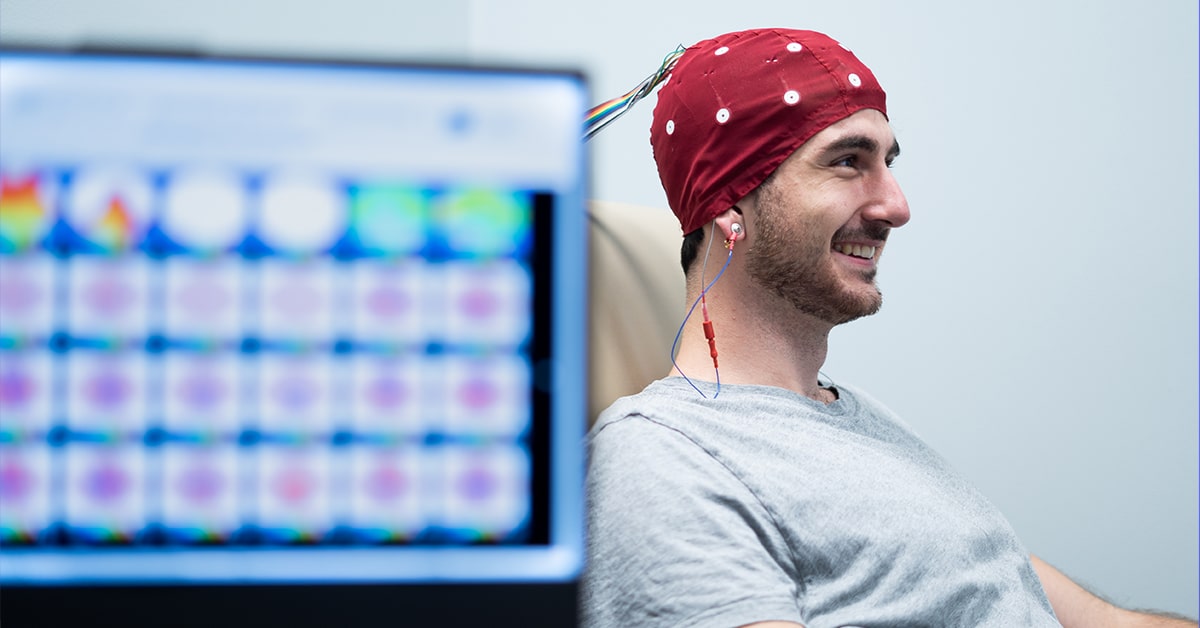
Neurofeedback for Sciata:
Neurofeedback, a non-invasive method aimed at optimizing brain function, has demonstrated potential in assisting individuals managing sciatica by addressing the neurological and emotional aspects of pain perception (1) . Although not directly addressing the physical symptoms, research suggests that this “brain exercise” can modulate altered brainwave patterns, potentially influencing how sciatic pain is perceived and managed, with some patients reporting reduced pain and improved emotional well-being (1,2). Chronic pain, known to amplify neuronal activity and disrupt the modulation of pain signals, presents an opportunity for exploring innovative biotechnologies like neurofeedback (3).
Resources
- Jensen, M. P., et al. “Neuromodulatory treatments for chronic pain: efficacy and mechanisms.” Nature Reviews. Neurology, vol. 10, no. 3, 2014, pp. 167-178.
- Kayiran, S., et al. “Neurofeedback Intervention in Fibromyalgia Syndrome; A Randomized, Controlled, Rater Blind Clinical Trial.” Applied Psychophysiology and Biofeedback, vol. 35, no. 4, 2010, pp. 293-302.
- Patel, K., Sutherland, H., Henshaw, J., Taylor, J. R., Brown, C. A., Casson, A. J., Trujillo-Barreton, N. J., Jones, A. K. P., & Sivan, M. (2020). Effects of neurofeedback in the management of chronic pain: A systematic review and meta-analysis of clinical trials. European journal of pain (London, England), 24(8), 1440–1457. https://doi.org/10.1002/ejp.1612
Pulsed Electromagnetic Field Therapy (PEMF) for Sciata:
PEMF therapy uses safe, low-frequency electromagnetic pulses to help ease sciatica symptoms by improving circulation and reducing inflammation and muscle spasms that can bother the sciatic nerve (1). The pulses can reach deep into the body, helping to heal internal issues by boosting ATP production, essential for cell function and recovery (1) . Some research suggests that PEMF might even accelerate regeneration in sciatic nerve injuries and stimulate the body’s natural healing processes, thereby reducing pain perception (2).
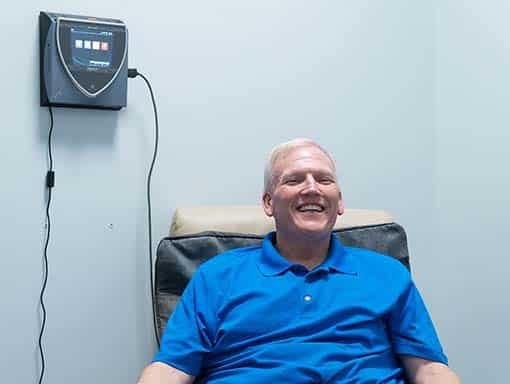
Resources
- Brooke Simons. “Sciatic Pain Flare Up and Relief Options!” PEMF Complete, 2023 https://pemfcomplete.com/sciatic-pain-flare-up-and-relief-options/
- Bademoğlu G, Erdal N, Uzun C, Taşdelen B. The effects of pulsed electromagnetic field on experimentally induced sciatic nerve injury in rats. Electromagn Biol Med. 2021;40(3):408-419. doi:10.1080/15368378.2021.1907403https://pemfcomplete.com/sciatic-pain-flare-up-and-relief-options/

Far Infrared Sauna for Sciata:
Heat from the infrared sauna brings with it increased circulation, nutrients, and oxygen through the body. Increasing circulation can help provide damaged tissues and irritated nerves nutrients and oxygen needed to start the healing process. When heat is followed by cold therapy, irritated nerves can be soothed which can lead to decreased pain (1). Infrared saunas can also help relax tense muscles of the back relieving tension and sciatic pain (1, 2). Furthermore, preclinical and clinical studies have reported positive effects, such as enhanced muscular recovery and reduced inflammation and pain with infrared therapies (3)
Resources
- org [Internet]. Cologne, Germany: Institute for Quality and Efficiency in Health Care (IQWiG); 2006-. Slipped disc: Non-surgical treatment options. [Updated 2020 Apr 9]. Available from: https://www.ncbi.nlm.nih.gov/books/NBK279469/
- https://www.goodhealthsaunas.com/health/can-sauna-use-ease-herniated-disc-pain/
- Kyselovic, J., Masarik, J., Kechemir, H., Koscova, E., Turudic, II., Hamblin, M.R. “Physical Properties and Biological Effects of Ceramic Materials Emitting Infrared Radiation for Pain, Muscular Activity, and Musculoskeletal Conditions.” Photodermatology, Photoimmunology & Photomedicine, vol. 39, 2023, pp. 3-15, doi:10.1111/phpp.12799.

